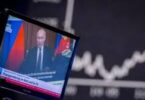Megan Cassella
Businesses say they can’t find enough workers to hire. The pace of Americans moving off the unemployment rolls is slowing. And a top Federal Reserve official is warning that job trends in May might look “odd.”
All of that suggests that the next monthly US em-ployment report, which will be released Friday morni-ng, may not show the rob-ust growth that President Joe Biden needs to help pass his sweeping agenda.
On the heels of April’s sluggish job growth, which shocked economic forecasters and sparked debate over a nationwide worker shortage, the May data will be closely watched for an indication of whether something significant is holding back the labor-market recovery — such as what Republicans say are overly generous federal unemployment benefits — or whether the previous data was nothing more than a one-month blip.
Democrats have downplayed the concerns, maintaining that the path back to full employment was always going to be winding and stacked with challenges. And economists are predicting the report will show 630,000 jobs were created in May, a robust number. But while Biden has been polling strongly on his handling of the economy, a second straight month of slower-than-expected job creation could embolden critics of his multitrillion-dollar infrastructure spending plans and raise fears that the labor market is facing a long road back to normal.
“There is growing anxiety about inflation, the economy overheating, unemployment not coming down fast enough and businesses that can’t find jobs,” said Brian Riedl, a former economic aide to Sen. Rob Portman (R-Ohio) and other GOP lawmakers. “Another bad jobs report may further the narrative of a White House overextending itself on stimulus and in over its head.”
The outlook for the May jobs report remains highly uncertain. Most economists are optimistic that the numbers will be strong as the country continues to reopen. But many also remain wary of the possibility that the same pressures that led to only 266,000 jobs being added in April — child-care issues and fear of the virus, among them — could keep growth low through May as well.
“All those tensions, they’re not actually going to go away even for the next jobs report,” Dallas Fed President Robert Kaplan said at a recent technology conference.
“We think you’re going to see another odd or unusual report,” Kaplan said. “We know businesses are telling us they got plenty of demand, but they can’t find workers, either skilled or unskilled.”
Some early data signal that job creation may not be roaring back. The Real-Time Population Survey, a tool backed by the Dallas Fed that aims to track unemployment trends more quickly than the Labor Department, saw a slowdown in the labor-market recovery in May, with employment ticking down to 71.1 percent from 71.8 percent the month before.
The survey has largely predicted the trends that official government reports have found in recent months, showing a big jump in job creation in March — when 770,000 net jobs were added — and a flat employment rate in April.
And while initial applications for jobless benefits have been steadily falling each week, continued claims, or the number of unemployed people who refile to receive another round of aid, have been relatively steady at roughly the same level as in early April.
The May employment report, whatever it shows, will fuel the intense debate between Democrats and Republicans over whether Biden’s proposed spending on infrastructure and family assistance programs is too much or too little, especially coming after the $1.9 trillion Covid-relief legislation he signed in March. The administration has largely settled on a two-pronged approach to selling those proposals, arguing that they would help put more Americans back to work now while also rebuilding the country for the future.
And though most economists say infrastructure investments pay off over the long term and should not be considered in the context of the current economic cycle, there is a recognition that the public perception of a strong economy now would bolster the administration’s popularity and political capital — giving the White House more room to push through its plans. “The faster his recovery, historically, the happier people are, the more satisfied they are with the administration. And they say, ‘Whatever they’re doing, they must be doing it well,’” said Austan Gools-bee, who led the White Ho-use Council of Economic Advisers in the Obama administration and informally advised the Biden presidential campaign.
“Faster recovery and bigger jobs numbers just puts more pennies in the bank for the administration’s capital,” he said, “because it makes them more popular.”
By the same logic, though, a weaker report would give fresh ammunition to Republicans who argue that overly generous relief measures have been keeping workers at home. The primary target will be the $300 in enhanced weekly unemployment benefits that the federal government approved in late December and which Biden extended into early September through his rescue plan that passed in March. “Disappointing jobs reports and a looming inflationary disaster does not indicate an economic plan that is working, Mr. President,” Rep. John Carter (R-Texas) posted on Twitter on May 27.
Riedl, now with the right-leaning Manhattan Institute, said a second month of sluggish growth would put the White House on the defensive. “There will be a lot of pressure to change course,” he said.
Still, with the number of vaccinated Americans having vastly increased from April to May and businesses continuing to open, consensus expectations remain bullish. And even if the report once again fails to meet expectations, the White House will focus on the long-term, according to allies and outside advisers, by emphasizing that the economy is still broadly moving in the right direction and that new investments in infrastructure will pay off down the road.
“People are feeling good about this, and if it’s a great number, people will continue to feel even better,” said Rep. Don Beyer (D-Va.), who leads the Joint Economic Committee in Congress and is in regular contact with the White House. “And if it’s not, people like me have to say, ‘Hang on. Be patient.”’






